Linux is a renowned open-source OS extensively used on platforms such as mobile devices, embedded systems, servers, and PCs. Linus Torvalds is the main man behind its development in 1991, and ever since it has evolved into a robust and flexible operating system.
If you’re new to the Linux open-source operating system, choosing the right distribution can make your journey smoother. In 2024, several Linux distributions cater specifically to beginners, offering user-friendly interfaces and robust support.
Why Choose the Linux Operating System
For beginners, this is the ideal OS for you guys, and here are some of the reasons:
- User-Friendly Distributions: Linux comes with distributions that provide a hassle-free user experience, allowing users to customize options based on their preferences.
- Flexibility and Control: Linux gives users an immense amount of flexibility and control over their operating system. It also offers an array of software options and can be installed on a variety of devices, such as desktops, servers, and more.
- Community and Support: Linux has a large and committed community of developers and users who are always ready to help those who are just getting their feet wet. In addition, when intricate issues or concerns emerge, there are plenty of online resources, such as tutorials, documentation, and forums, to get help from.
Factors to Consider While Choosing Linux Distribution
With numerous options available, selecting a Linux distribution can be daunting, especially if you are a beginner. When selecting a Linux distribution, you should consider the following factors:
- Software Repositories: The amount and diversity of software accessible in a distribution’s repositories is a key factor to consider. For instance, Ubuntu is better suited for daily tasks and multimedia applications due to its extensive software repository and increased third-party support.
- Stability and Performance: Always go for distributions that prioritize stability and optimum performance. For example, Debian and CentOS are renowned for their stable releases with long support cycles.
- Updates and Security: You can opt for a distribution that provides regular updates with the latest software and security patches.
Best Linux Distributions for Beginners
In this post, we’ll explore the best Linux distributions for beginners, highlighting their outstanding features so that you can get the most out of them.
Whether you’re a tech enthusiast or just curious about Linux, these distributions are perfect for getting started on your Linux adventure.
1. Ubuntu
Ubuntu is one of the most widely used Linux distributions, with an estimated 40 million desktop users as well as a substantial web server user base.
Ubuntu is free and open-source and has built-in features that meet the needs of users.
Among Ubuntu’s cutting-edge features are:
- Extensive Software Repository: Ubuntu has a large repository of software packages that is simple to install and maintain.
- Regular Releases: Users can choose between Long Term Support (LTS) versions that are released every two years and new versions that are released every six months. This is according to the set release schedule.
- GNOME Desktop Environment: GNOME offers a clutter-free interface with icons for navigation and has been the default desktop environment since Ubuntu 17.10.
- Security: Ubuntu places a strong emphasis on security. It has features like AppArmor for application-level security and the Uncomplicated Firewall (UFW) for firewall configuration.
- Cloud Integration: Cloud computing environments frequently employ Ubuntu. The server edition is a common option for deploying apps on cloud computing platforms such as Microsoft Azure, Amazon Web Services (AWS), and Linode.
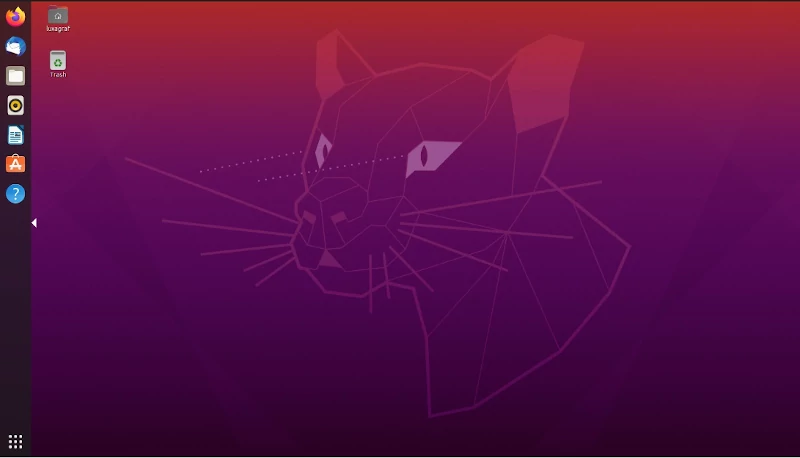
2. Linux Mint
Linux Mint is a free open-source lightweight distribution renowned for its user-friendly approach, innovative multimedia capabilities, and visual appeal.
The default desktop environment for Linux Mint is Cinnamon. This desktop environment packs a modern appearance and a ton of customization options.
The following are some of the key features of Linux Mint:
- Multimedia Support: Linux Mint comes with built-in support for several multimedia codecs and plugins, which lets users play common media formats without the need for extra installations.
- Desktop Environments: Cinnamon, Xfce, and MATE are among the desktop environments available in Linux Mint. Cinnamon is based on GNOME, and Mate and Xfce are classic desktop environments that utilize few resources compared to Cinnamon.
- Software Manager: The software manager in Linux Mint streamlines processes such as installing, updating, and uninstalling software applications.
- Driver Manager: Linux Mint features a driver manager that makes it simple for users to install proprietary drivers for their wireless devices and graphics cards.
- Community and Support: The community surrounding Linux Mint is vibrant and supportive. To ask questions, exchange information, or talk about different parts of the distribution, users can access forums and documentation online.
- Variants: Besides the two main desktop editions, which are Cinnamon and MATE, Linux Mint has other versions based on the Ubuntu and Debian codebases. Xfce and KDE editions, as well as Linux Mint Debian Edition (LMDE), are some of these variants.
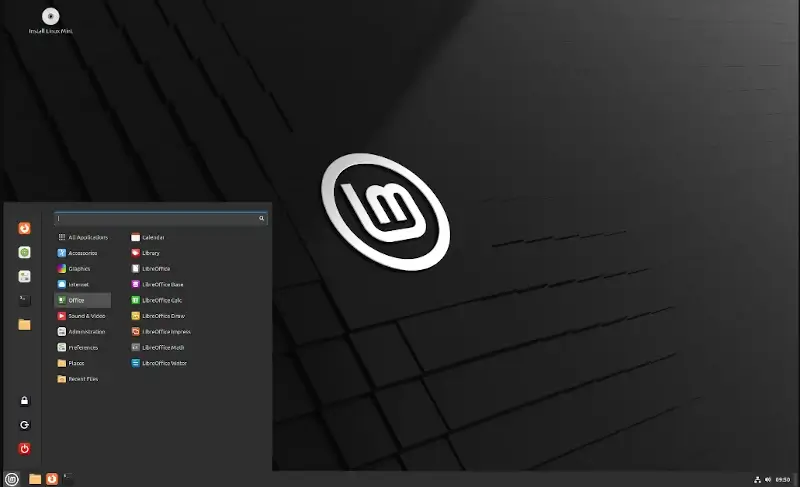
3. Elementary OS
Elementary OS is a feature-rich Linux distribution that comes with an array of applications, including music, photos, email, and more. It also features a plethora of customization options and privacy-enhancing features.
Elementary OS uses a minimalist desktop environment known as Pantheon. Pantheon is entirely written in Vala using the GTK3 toolkit, and it shares several visual and usability traits with GNOME Shell and macOS.
Key features of Elementary OS include:
- Stable Version Releases: Elementary OS has a history of producing stable version releases that have undergone substantial redesigns and enhancements. These releases are based on the Ubuntu LTS version and have codenames, which include Jupiter, Luna, Freya, Loki, Juno, Hera, Odin, Jlnir, and Horus.
- AppCenter: Elementary OS features an AppCenter that is used for organizing and setting up applications. The AppCenter makes it simple for users to locate and install applications, and some specific apps may include the option “pay what you want model” to support developers.
- Pluggable Search Providers: Users can conduct desktop-based searches for files, apps, and internet material thanks to the desktop environment’s support for pluggable search providers.
- Availability of Source Code and Security: Having the source code available for auditing helps to guarantee the privacy and security of the software.
- Automatic Driver Installation: Elementary OS can automatically detect hardware and install open-source drivers, streamlining the process for users.
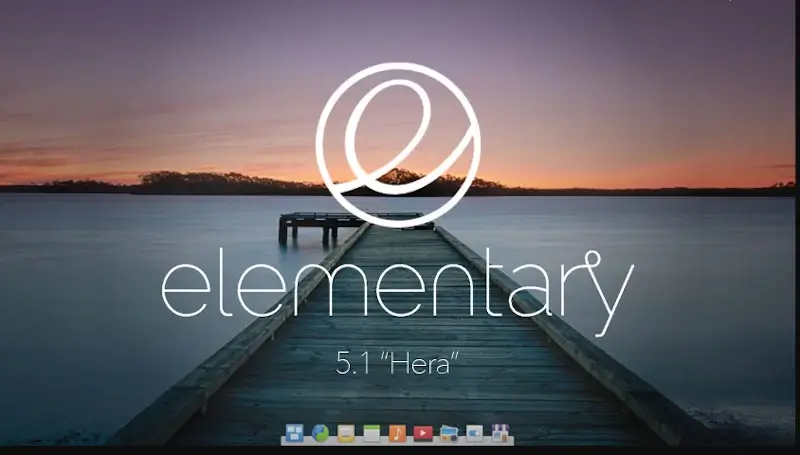
4. Zorin OS
Zorin OS is a Linux distribution based on Ubuntu designed to be user-friendly and accessible for users switching from other operating systems such as MacOS and Windows.
Zorin OS has a Core edition that is available for free download and usage and a Pro edition with a subscription plan that lets users unlock more features, applications, and support.
GNOME 3 and XFCE 4 are the default desktop environments for Zorin OS. These desktop environments provide a clutter-free browsing experience and an intuitive interface.
Zorin OS packs the following functionality out of the box:
- Compatibility With System Requirements: Zorin OS is compatible with a wide range of systems, as it is tailored to run on machines that are at least 15 years old. System requirements differ according to the Zorin OS version, so users can select an edition that works with their hardware.
- Zorin Software Center: Zorin OS has a built-in software center for organizing and installing apps, just like other Linux distributions. Users can explore and install a variety of apps from the software center.
- Software Availability: Zorin OS has a large software repository with over 60,000 packages available for installation.
- Security and Privacy: Zorin OS is tailored to give users a dependable and secure operating system in a private computing environment.
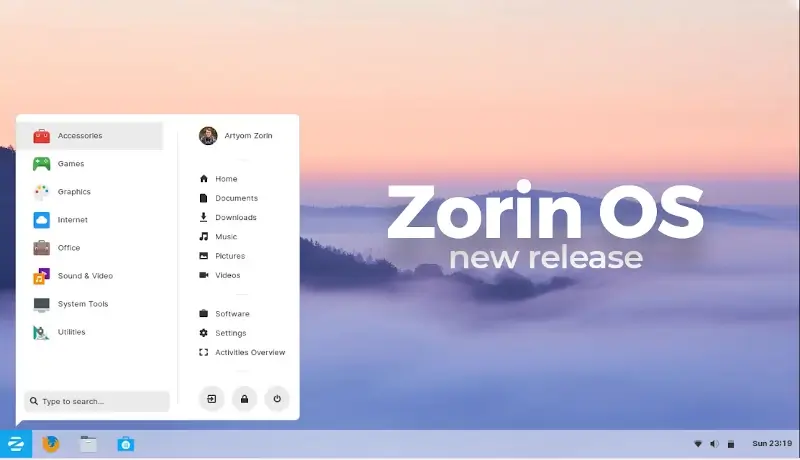
5. Manjaro
Manjaro is a Linux distribution suitable for both novice and seasoned Linux users because of its ease of use, user-friendliness, and rolling release model. Manjaro has official versions that come with Xfce, KDE, and GNOME desktop environments.
In addition, there are community-maintained versions with desktop environments such as MATE, Sway, i3, Budgie, Cinnamon, Deepin, and more.
Key features of Manjaro:
- Arch Linux Compatibility: Majaro is based on Arch Linux, allowing users to access a vast selection of software packages.
- Package Management: Major uses the Pacman package manager, which offers an easy-to-use interface for managing software installations, updates, and removals.
- The Arch User Repository (AUR) is Accessible to Users: This is a community-driven repository that expands the selection of software packages by including a variety of apps that are kept up to date by the Arch Linux community.
- Calamares Installer: Manjaro utilizes the Calamares installer, which is a graphical installer that makes installation easier and more accessible for beginners.
Manjaro has a vibrant and supportive community: Users have access to documentation, forums, and the ability to ask other Manjaro users for assistance.
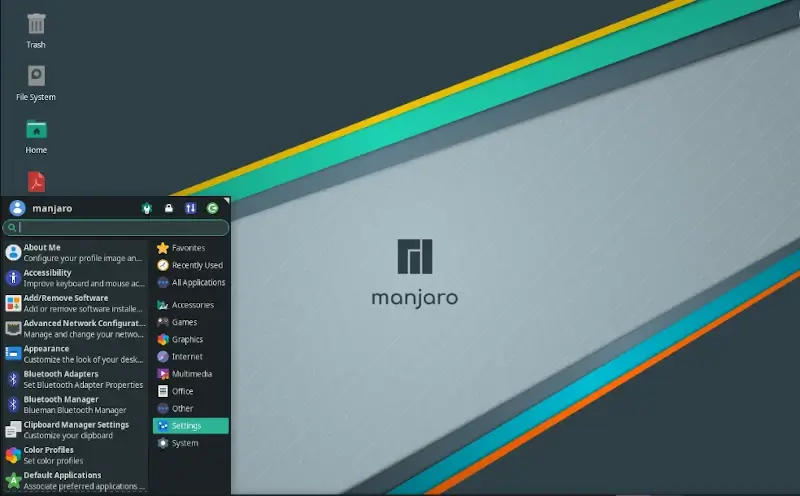
6. Pop!_OS
Pop!_OS is a Linux distro based on Ubuntu and developed by System76, an organization that focuses on PCs running Linux. Pop!_OS is designed to be intuitive, effective, and visually stunning.
Pop! OS features a theme specifically designed for the GNOME Shell interface. Additionally, it has a GUI toggle with four display modes—hybrid, discrete, compute, and iGPU only—in the GNOME system menu for switching between multiple video modes on laptops with dual GPUs.
Pop!_OS also employs Xorg as its display manager, with Wayland as an optional add-on. Besides that, it is optimized for System76 hardware and comes equipped with NVIDIA support, making it well-suited for System76 Computers.
Key features of Pop!_OS:
- Flatpak and APT Package Management: It uses both APT and Flatpak, enabling users to install, update, remove, and administer a variety of applications with ease.
- Pop!_Shop: It has a software shop of its own, known as Pop!_Shop. The shop offers an easy-to-access curated collection of software packages that users can explore and install.
- Security Features: It integrates security features, and System76 continuously addresses security flaws to assure the safety of the operating system.
- Auto-Tiling With Pop Shell: This feature allows users to arrange open application windows in a tiling pattern. The goal of this is to increase productivity and effectively manage several applications.
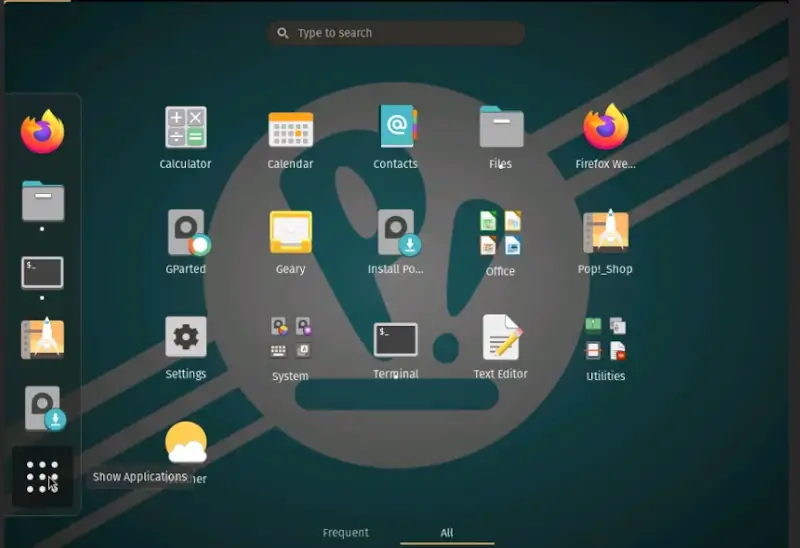
7. Fedora
Fedora is a widely recognized Linux distribution that is sponsored by Red Hat, the world’s leading provider of open-source solutions. It follows a release model, providing users access to the latest features and updates. The Fedora project is responsible for its development and maintenance.
The goal of the project is to provide a cutting-edge, free, and open-source operating system for various use cases, including development, testing, and production.
GNOME is Fedora’s default desktop environment. On the other hand, it also supports several different desktop environments, including MATE, Cinnamon, Xfce, LXQt, LXDE, KDE Plasma, and others.
At the time of writing this article, the latest version is the Fedora 39 workstation, which comes with the Linux kernel 6.5. This Linux kernel adds support for numerous new performance enhancements as well as support for CPUs, graphics cards, and storage devices.
Key features of Fedora:
- SELinux: It incorporates Security-Enhanced Linux (SELinux), which offers enhanced security features such as mandatory access controls and access control policies.
- Editions: It offers a variety of editions that are tailored for particular use cases. These consist of Workstation (for desktop users), Server (for server installations), and several additional editions designed to meet specific needs.
- Package Management: Red Hat Package Manager( RPM) is the package management system used by Fedora. Software packages are often installed, updated, and removed using the DNF package management tool.
- Community-Driven: To improve and enhance the distribution, a varied group of contributors, including developers, testers, and users, work together to develop and maintain Fedora.
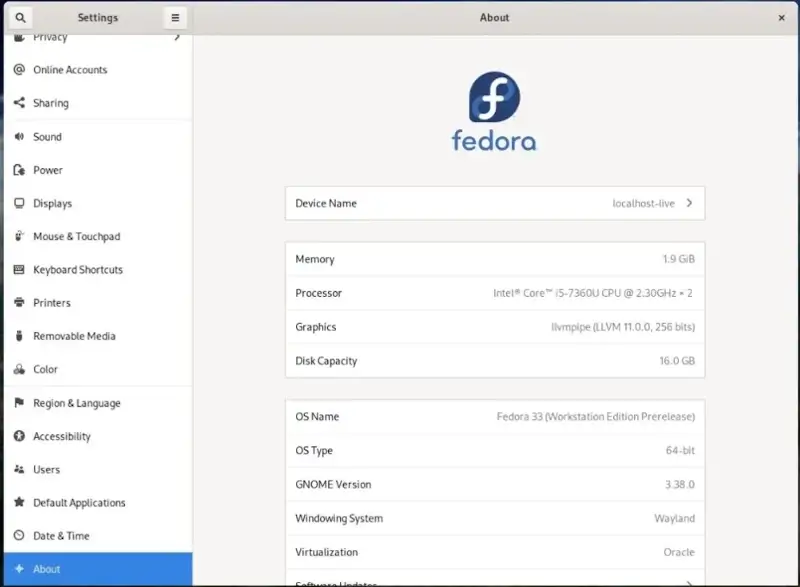
8. Debian
Debian is a well-established Linux distribution In the open-source community. It is renowned for its stability, security, optimum performance, and dedication to free software principles.
GNOME is the default desktop environment for Debian. The Debian installer will automatically select GNOME as the default desktop environment during the installation process. However, users also have the option to select various desktop environments, such as Xfce, KDE Plasma, Cinnamon, and more.
Debian packs three releases out of the box, including stable, testing, and unstable. For production circumstances, the stable release is recommended; for users who want the most recent software upgrades and can tolerate some volatility, the testing and unstable releases are better suited.
Various Linux distributions, including Ubuntu, Kali Linux, LMDE, and Raspbian, are all based on Debian. These distributions can add their own features, packages, and release schedules, but they use Debian as their foundation.
Debian supports several kernels, primarily for the Hurd, a collection of servers that run a microkernel to offer a variety of features.
The Advanced Package Tool (APT) is responsible for managing packages in Debian. On a Debian system, apt or apt-get makes it simple for users to install, update, and uninstall software packages.
In addition, Debian is compatible with a variety of devices, including embedded systems, servers, and personal computers, thanks to its broad support for hardware architectures.
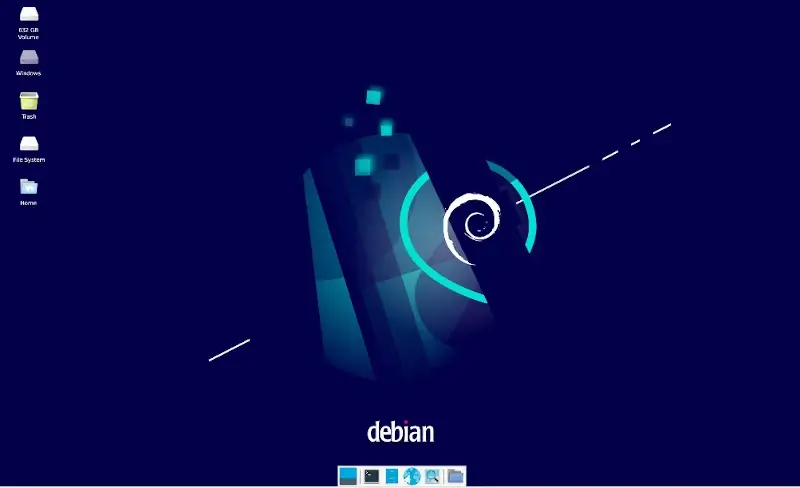
9. Solus
Solus is an independent Linux distribution that is developed from scratch and offers an intuitive desktop environment. Since its initial release in 2015, it has grown in popularity due to its emphasis on performance, elegance, and simplicity.
Solus follows a rolling release model, allowing users to receive software upgrades without having to reinstall the operating system.
This independent OS is tailored to provide a unified computing experience and is designed for home use. In addition, it comes with a unique desktop environment known as Budgie, which appears to be user-friendly and lightweight. Besides that, Solus also supports other desktop environments such as GNOME, Plasma, and XFCE.
Solus features a curated selection of software packages, allowing users and developers to test different software packages to guarantee stability and compatibility. The distribution uses a package management system known as “eopkg“.
Solus is an original and stand-alone project, and it is not based on any other Linux distribution. It strives to give both beginners and seasoned Linux users a simplified and user-centered experience.
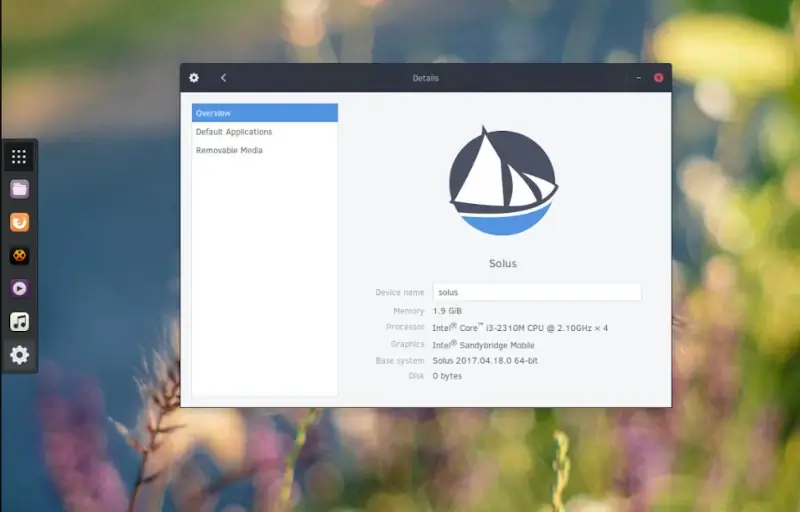
10. MX Linux
MX Linux is a Linux distribution that uses core antiX components and is based on the Debian stable. It provides a variety of desktop environments, including Fluxbox, KDE, and Xfce.
It is renowned for stressing efficiency, simplicity, and ease of use. With a full suite of desktop apps, MX Linux strives to deliver an operating system that is both stable and lightweight.
MX Linux allows users to create a live USB, which implies that even when operating from a USB drive, modifications and data can be saved in between sessions.
A wide range of tools and utilities are included in MX Linux to improve the user experience. For instance, the MX Tools offer a central location for setting up and controlling the panel, system preferences, user accounts, and other system components.
In addition, users of MX Linux have access to an extensive collection of software packages thanks to the use of Debian’s package management system. The “Synaptic” package manager provides a graphical interface for installing, updating, and uninstalling applications.
MX Linux has an active community of users and developers that aids in the development of the operating system. On the official forums, users can exchange experiences and offer assistance to one another.
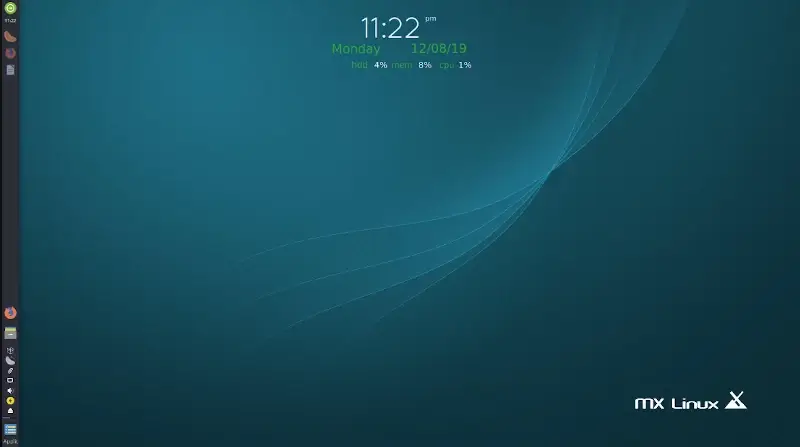
11. Peppermint OS
Peppermint OS is a lightweight Linux distribution based on Debian and Devuan Stable (initially based on Ubuntu). With comparatively low system requirements, Peppermint aims to provide a welcoming Linux environment for beginners.
Peppermint OS stands out among lightweight and user-friendly Linux variants by emphasizing speed, ease of use, and connection with cloud-based technology. This is a fantastic choice for people who desire a quick and effective computing experience.
It uses the LXQt desktop environment, which is configurable and renowned for having low resource requirements, making it compatible with both modern and older hardware.
In addition, it provides users with the ability to modify the system to meet their needs. Besides that, it combines a contemporary feature set with a minimalistic appearance, making it suitable for both novice and experienced Linux users.
Read our guide on the Peppermint OS review for additional information.
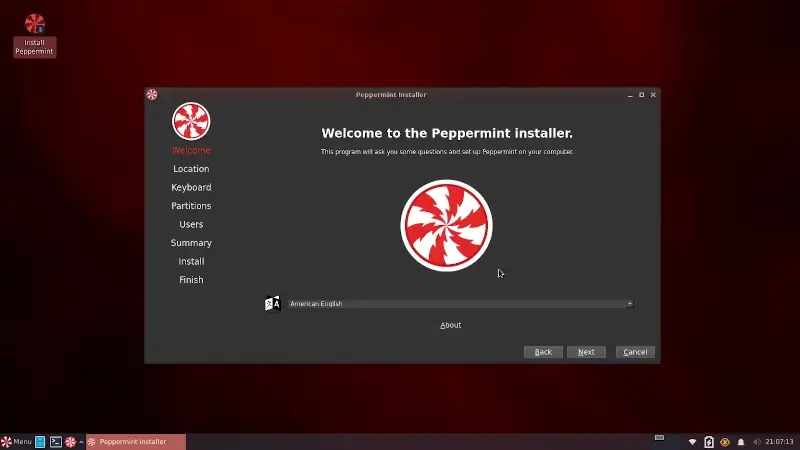
12. Deepin
Deepin is a lightweight Linux distribution based on Debian stable. Wuhan Deepin Technology, a Chinese technology company, is responsible for its development. Deepin is renowned for its exquisite and intuitive interface, aiming to provide an effective computing experience.
Deepin comes with its desktop environment, known as DDE, which has been designed to be aesthetically pleasing, simple to use, and intuitive. This desktop environment comes with a system tray, a settings control center, and a taskbar at the bottom.
Deepin has its own software center, known as the Deepin Store, where users can explore, install, and manage apps. Users with different linguistic backgrounds can use Deepin because it supports numerous languages.
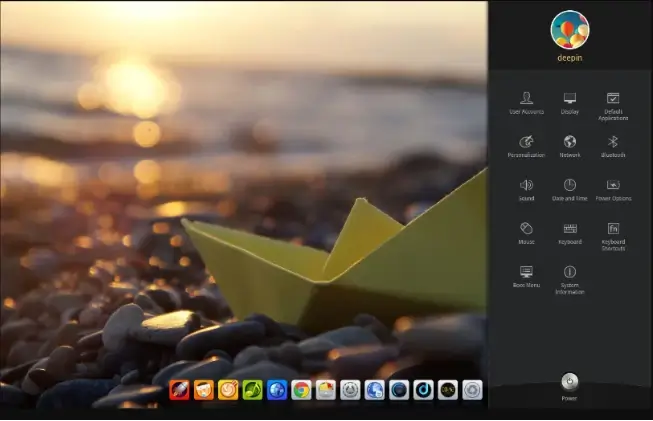
Conclusion
Selecting the best Linux distribution is a very personal decision that is based on personal requirements and tastes. However, as a Linux beginner, you can make an informed choice by taking into account elements such as software availability, hardware compatibility, community support, and ease of use.
There is a Linux distribution out there that will work for you, regardless of your level of knowledge. The optimal Linux distribution is ultimately the one that you are most productive and at ease with; therefore, it’s crucial to test out a few alternatives before settling on one.
Which Linux distribution is the best, in your opinion? Let me know in the comment section below.

I think openSuse Leap should definitely be included in this list. Easy and straightforward install, very sane defaults and YaST as the most complete and user friendly central system configuration tool I’ve ever seen on any linux distro.
And that’s why it’ll get a dedicated article in good time 🙂